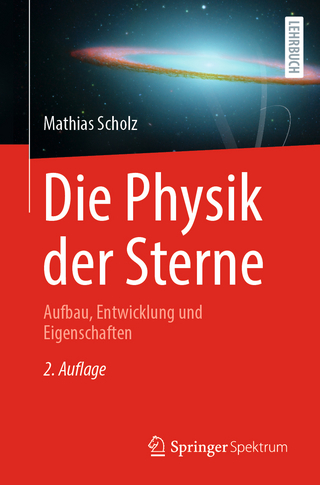
Astrophotography for the Amateur
Seiten
1985
Cambridge University Press (Verlag)
978-0-521-25391-8 (ISBN)
Cambridge University Press (Verlag)
978-0-521-25391-8 (ISBN)
- Titel erscheint in neuer Auflage
- Artikel merken
Zu diesem Artikel existiert eine Nachauflage
A guide to taking pictures of stars, galaxies, the Moon, the Sun, comets, meteors and eclipses.
Basic Astrophotography tells you how to take pictures of stars, galaxies, planets, the Moon, the Sun, comets, meteors and eclipses using equipment readily available to the amateur astronomer. The first section, 'Getting Started', presupposes little knowledge of photography or astronomy and concentrates on what can be done with minimal equipment. For example, an ordinary 35 mm camera on a tripod, aimed at the sky on a starry night, will photograph more stars than the unaided eye can see and will bring out an awesome variety of colours. Add a telephoto lens, a pair of binoculars, or a small telescope, and you have all that is needed to photograph an eclipse or the main surface features of the moon. The two subsequent sections, 'Advanced Techniques' and 'Equipment and Materials' cover the use of cameras in conjunction with telescopes and constitute a thorough handbook, including technical imformation on optical systems, film characteristics, and processing techniques. Throughout, the emphasis is on current practice. This book will become the standard handbook for amateur astronomers who want to take pictures of the stars and will also appeal to photography enthusiasts who know relatively little about astronomy but are intrigued by spectacular pictures.
Basic Astrophotography tells you how to take pictures of stars, galaxies, planets, the Moon, the Sun, comets, meteors and eclipses using equipment readily available to the amateur astronomer. The first section, 'Getting Started', presupposes little knowledge of photography or astronomy and concentrates on what can be done with minimal equipment. For example, an ordinary 35 mm camera on a tripod, aimed at the sky on a starry night, will photograph more stars than the unaided eye can see and will bring out an awesome variety of colours. Add a telephoto lens, a pair of binoculars, or a small telescope, and you have all that is needed to photograph an eclipse or the main surface features of the moon. The two subsequent sections, 'Advanced Techniques' and 'Equipment and Materials' cover the use of cameras in conjunction with telescopes and constitute a thorough handbook, including technical imformation on optical systems, film characteristics, and processing techniques. Throughout, the emphasis is on current practice. This book will become the standard handbook for amateur astronomers who want to take pictures of the stars and will also appeal to photography enthusiasts who know relatively little about astronomy but are intrigued by spectacular pictures.
| Erscheint lt. Verlag | 7.11.1985 |
|---|---|
| Zusatzinfo | Worked examples or Exercises |
| Verlagsort | Cambridge |
| Sprache | englisch |
| Maße | 189 x 246 mm |
| Gewicht | 678 g |
| Themenwelt | Naturwissenschaften ► Physik / Astronomie ► Astronomie / Astrophysik |
| ISBN-10 | 0-521-25391-8 / 0521253918 |
| ISBN-13 | 978-0-521-25391-8 / 9780521253918 |
| Zustand | Neuware |
| Informationen gemäß Produktsicherheitsverordnung (GPSR) | |
| Haben Sie eine Frage zum Produkt? |
Mehr entdecken
aus dem Bereich
aus dem Bereich
die Geschichte und Erforschung unserer Galaxie
Buch | Hardcover (2023)
C.Bertelsmann (Verlag)
30,00 €
Aufbau, Entwicklung und Eigenschaften
Buch | Softcover (2024)
Springer Spektrum (Verlag)
64,99 €



